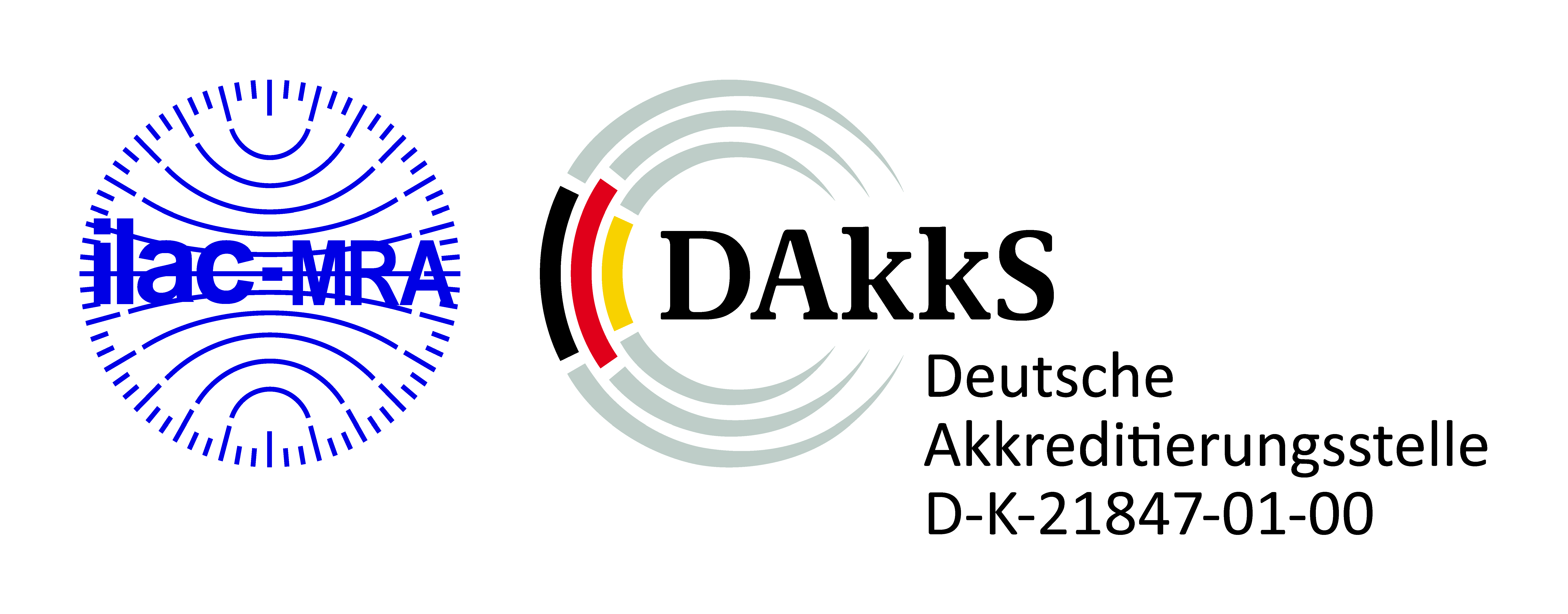What does sensitivity mean? How important is it?
The higher the sensitivity, the lower the statistical uncertainty of the measurement result and the minimum measurable radon concentration. So does a device with higher sensitivity always deliver the more precise values? No. Under field conditions, devices without real spectroscopy must compensate for background signals, which results in an increase in statistical uncertainty and detection limit. Spectroscopic devices with significantly lower sensitivity then provide equally good or better measurement results. Read here why this is the case.
Measuring the radon concentration always means counting the decays that take place in a measuring chamber within a period of time. A measuring device can only register a part of these decays. The parameter sensitivity (counting efficiency) indicates how many decays are actually detected at a given radon concentration. The sensitivity depends on the measuring principle used and the size of the measuring chamber. A high level of sensitivity is good, but it is expensive due to the technical outlay or is associated with restrictions in the area of application. Therefore, look at all parameters of the measuring device when you are looking for the optimal device for your application!
Radioactivity is a statistical process, ie even with a constant radon concentration, a different number of radon atoms decay in every time interval. This number fluctuates around a mean (better expected value). The larger the expected value itself, the smaller the range of fluctuation around this expected value. A measuring device with high sensitivity registers a larger number of decays within a time interval, which results in a smaller deviation of an individual measurement from the expected value. This deviation is also known as statistical uncertainty or statistical errors. For devices with low sensitivity, the time interval must therefore be selected to be very long in order to register a sufficiently large number of decays for an acceptable statistical error.
The following applies to devices with higher sensitivity:
- With identical (e.g. maximum permissible) statistical uncertainty, lower radon concentrations or smaller changes in concentration can be measured.
- Identical radon concentrations can be measured with a lower statistical error for the same measurement duration.
- Identical radon concentrations can be measured in a shorter time with the same fluctuation range of the measured value.
However, the statistical error does not increase linearly with the number of detected pulses, but with their square root. If you compare the statistical errors of a device with a high sensitivity with those of a device with a lower sensitivity, you can see that their fluctuation ranges differ greatly at low concentrations and / or short measuring times. With increasing concentrations, however, they are getting closer and closer.
Example: A less sensitive device 1 detects 10 decays at a radon concentration of 100 Bq/m³, device 2 with ten times sensitivity corresponds to 100 decays.
| Radon concentration | Statistical uncertainty device 1 | Statistical uncertainty device 2 |
|---|---|---|
| in Bq/m³ | in % | in % |
| 100 | 32 | 10 |
| 1000 | 10 | 3.2 |
| 10000 | 3.2 | 1 |
However, this simple estimate only applies if all detected decays can be assigned to the current radon concentration. In field use, however, nuclides also decay in the measuring chamber, to which this does not apply and which a device cannot distinguish from one another without spectroscopy. These decays are called the background signal, which must be estimated and subtracted from the total number of decays detected. Otherwise the measured value would be too high.
An underground signal is generated by:
- Residual activity from previous measurements in quick successive measurements
- inseparable Thoron and its relatively long-life progeny
- Long-term Polonium-210 contamination caused by the radon measurement itself
- Ambient radiation and spontaneous ionization in ionization chambers
Since both the number of impulses detected as a whole and the estimated background signal are associated with statistical uncertainty, both add up during subtraction in accordance with Gaussian error propagation. The uncertainty of the corrected measured value increases more or less depending on the size of the background.
Devices with real α-spectroscopy differentiate the different nuclides energetically so that they can be counted separately. A background subtraction is therefore not necessary.
The sensitivity required depends on the application and the measuring principle used. The following table contains reference values for some example scenarios.
| Scenario | Sensitivity |
|---|---|
| Long-term measurements (> 1 month) in rooms to determine the average radon concentration in the range from 100 to 500 Bq/m³ | > 0.05 cpm/(kBq/m³) |
| Measurement of dynamic changes such as daily courses, ventilation measures, etc. in the range from 100 to 500 Bq/m³ | > 1.5 cpm/(kBq/m³) |
| Fast (20 minutes) and repeated measurement of radon in the soil air at 50 kBq/m³ with spectroscopic devices | > 2.5 cpm/(kBq/m³) |
| Reference measurements to determine calibration factors at low radon concentrations (< 300 Bq/m³) | > 15 cpm/(kBq/m³) |
cpm = counts per minute (number of decays detected within one minute)
FAQ
- What to pay attention to when choosing a device?
- Which device delivers the fastest measurement result?
- Which measuring device fits my expected radon concentration?
- What about long-term contamination?
- What does sensitivity mean? How important is it?
- Is Thoron an issue that affects me too?
- What advantage do I get from time-resolved radon measurement?
- How accurately can I measure radon?
show all


